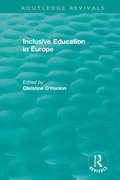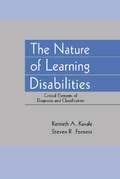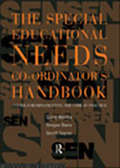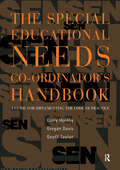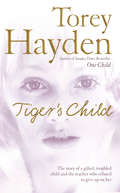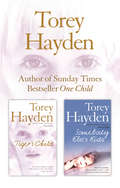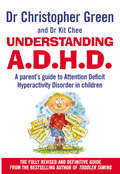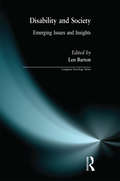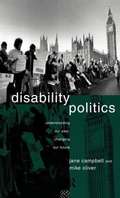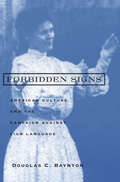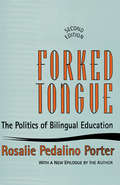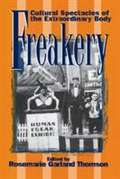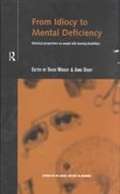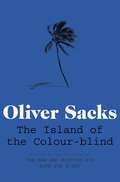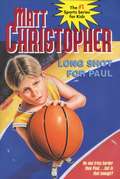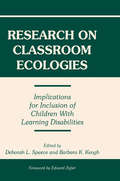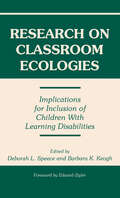- Table View
- List View
Hand in Hand: Essentials of Communication and Orientation and Mobility for Your Students Who Are Deaf-Blind: Volume I, Units 1, 2, and 3
by Kathleen Mary Huebner Jeanne Glidden Prickett Therese Rafalowski Welch Elga JoffeeThis series was designed to develop resources for educators of children who are visually impaired, hearing impaired, and severely disabled. The Hand In Hand materials emphasize the communication and mobility skills crucial to independence, and provide important information to help service providers do their jobs effectively. Containing contributions from more than 30 nationally recognized experts in the field of deaf-blindness, this groundbreaking information consists of four components that can be used separately or together. A two-volume, self-study text that explains how deaf-blind students learn, focusing on essential communication and mobility skills. Designed to provide comprehensive information in an easy-to-read way, this invaluable resource includes identified key concepts, self-study questions and answers, and references. The user-friendly format includes concise "Help at a Glance" and "From Theory to Practice" sections throughout. Sidebars, figures, tables, graphs, and photos offer additional perspectives and information.
Inclusive Education in Europe (Routledge Revivals)
by Christine O'HanlonOriginally published in 1995, this book offers a crucial view of the implementation of legislation for the integration of pupils with special educational needs in EU countries at the time. The match or mismatch between the rhetoric and reality, between the policy and the practice are reviewed by presenters from a recent appraisal of progress in individual national contexts. Authors are critical of the situation in their own countries and call upon recent and relevant research sources to support their views. The relationships between particular themes in the education of pupils with special needs are observed and compared in a broad European context.
Inclusive Education in Europe (Routledge Revivals)
by Christine O'HanlonOriginally published in 1995, this book offers a crucial view of the implementation of legislation for the integration of pupils with special educational needs in EU countries at the time. The match or mismatch between the rhetoric and reality, between the policy and the practice are reviewed by presenters from a recent appraisal of progress in individual national contexts. Authors are critical of the situation in their own countries and call upon recent and relevant research sources to support their views. The relationships between particular themes in the education of pupils with special needs are observed and compared in a broad European context.
The Nature of Learning Disabilities: Critical Elements of Diagnosis and Classification
by Kenneth A. Kavale Steven R. FornessThe category of learning disabilities continues to be among the most contentious in special education. Much of the debate and dissent emanates from a lack of understanding about its basic nature. The failure to evolve a comprehensive and unified perspective about the nature of learning disabilities has resulted in the concept being lost. The loss is best illustrated through the failure to answer this seemingly simple question: What is a learning disability? Using historical, empirical, theoretical, conceptual, and philosophical analyses, this volume explores a number of problems and issues facing the field of learning disabilities. The chapters cover historical influences, definitional problems, primary characteristics, assessment practices, theoretical development, major themes, research and measurement models, and long-term outcomes. The goal is to explicate the nature of learning disabilities by analyzing what it was supposed to be, what it has become, and what it might be. A predominant theme running through this text is the necessity for the field of learning disabilities to regain integrity by recapturing its essence.
The Nature of Learning Disabilities: Critical Elements of Diagnosis and Classification
by Kenneth A. Kavale Steven R. FornessThe category of learning disabilities continues to be among the most contentious in special education. Much of the debate and dissent emanates from a lack of understanding about its basic nature. The failure to evolve a comprehensive and unified perspective about the nature of learning disabilities has resulted in the concept being lost. The loss is best illustrated through the failure to answer this seemingly simple question: What is a learning disability? Using historical, empirical, theoretical, conceptual, and philosophical analyses, this volume explores a number of problems and issues facing the field of learning disabilities. The chapters cover historical influences, definitional problems, primary characteristics, assessment practices, theoretical development, major themes, research and measurement models, and long-term outcomes. The goal is to explicate the nature of learning disabilities by analyzing what it was supposed to be, what it has become, and what it might be. A predominant theme running through this text is the necessity for the field of learning disabilities to regain integrity by recapturing its essence.
The Special Educational Needs Co-ordinator's Handbook: A Guide for Implementing the Code of Practice
by Gregan Davies Garry Hornby Geoff TaylorIn September 1994, the Code of Practice on the Identification and Assessment of Special Educational Needs came into force, and with it a major increase in the expectations placed on teachers in mainstream schools, in particular on the SEN coordinators. This handbook discusses the implications for schools and gives practical guidance on how to implement the code effectively. Throughout, the book provides: * Further information, expanding upon that given in the Code * Examples * Ideas for dealing with SEN in schools * Checklists * Proformas for photocopying and direct use in schools The book begins by explaining and expanding on the Code of Practice, setting it in the context of recent developments including the Education Reform Act and OFSTED criteria for evaluating policy and provision for children in SEN. It then goes on to provide guidelines for implementing the Code of Practice at each of the five stages which it specifies and discusses issues which are raised by this. Specific chapters cover: * Identifying and assessing SEN within the school * Liaison with outside specialists * Statementing * Annual reviews * Knowledge needed by classroom teachers of children with SEN * Implications and issues at different stages of the education system * Parental involvement * Future challenges The book will be of particular interest to special needs coordinators, but will also be of value to anyone else working with children with SEN, including class teachers, heads, advisers, governors, educational psychologists and education welfare officers.
The Special Educational Needs Co-ordinator's Handbook: A Guide for Implementing the Code of Practice
by Gregan Davies Garry Hornby Geoff TaylorIn September 1994, the Code of Practice on the Identification and Assessment of Special Educational Needs came into force, and with it a major increase in the expectations placed on teachers in mainstream schools, in particular on the SEN coordinators. This handbook discusses the implications for schools and gives practical guidance on how to implement the code effectively. Throughout, the book provides: * Further information, expanding upon that given in the Code * Examples * Ideas for dealing with SEN in schools * Checklists * Proformas for photocopying and direct use in schools The book begins by explaining and expanding on the Code of Practice, setting it in the context of recent developments including the Education Reform Act and OFSTED criteria for evaluating policy and provision for children in SEN. It then goes on to provide guidelines for implementing the Code of Practice at each of the five stages which it specifies and discusses issues which are raised by this. Specific chapters cover: * Identifying and assessing SEN within the school * Liaison with outside specialists * Statementing * Annual reviews * Knowledge needed by classroom teachers of children with SEN * Implications and issues at different stages of the education system * Parental involvement * Future challenges The book will be of particular interest to special needs coordinators, but will also be of value to anyone else working with children with SEN, including class teachers, heads, advisers, governors, educational psychologists and education welfare officers.
The Tiger’s Child: The Story Of A Gifted, Troubled Child And The Teacher Who Refused To Give Up On Her
by Torey HaydenTorey Hayden returns with this deeply-moving sequel to her first book, One Child (the Sunday Times bestseller). After seven years, Torey is reunited with Sheila, the disturbed 6-year-old she tried to rescue.
The Tiger’s Child and Somebody Else’s Kids 2-in-1 Collection
by Torey HaydenFor the first time, bestsellers Somebody Else’s Kids and The Tiger’s Child are combined to show Hayden’s extraordinary attempt to rescue the children that no one else wanted to help.
Understanding Attention Deficit Disorder: A Parent's Guide To Attention Deficit Hyperactivity Disorder In Children
by Dr Christopher Green Dr Kit CheeIn his typically friendly and clear style, the ever-popular Dr Chris Green, with Dr Kit Chee, explains the treatments and causes of Attention Deficit Disorder, a condition that affects the learning and behaviour of up to 1 in 10 children in this country. Aimed at parents, teachers and health professionals, this book dispels the myths about ADHD and gives a clear overview of the condition: the causes, the behaviours and the treatments. Full of well-tried, practical strategies to help with common problems such as inattention, underachievement and impulsiveness, the book covers:- The causes, how to help improve behaviour at home and at school- Making the diagnosis, medication and alternative therapies- Hints to help reading, writing and language- Ways to boost self-esteem- ADHD in adults- The latest research and where to go for further helpUnderstanding ADHD offers invaluable guidance to help parents work with teachers and health professionals to give their child the best possible chance of entering adulthood with self-confidence, life skills and secure family relationships.
Disability and Society: Emerging Issues and Insights (Longman Sociology Series)
by Len BartonThe study of disability has traditionally been influenced mainly by medical and psychological models. The aim of this new text, Disability and Society, is to open up the debate by introducing alternative perspectives reflecting the increasing sociological interest in this important topic.Disability and Society brings together for the first time some of the most recent original research in this rapidly expanding area. The contributors, both disabled and non-disabled, are all leading thinkers in their field and suggest new ways of understanding disability, developing policy and challenging current practice.
Disability and Society: Emerging Issues and Insights (Longman Sociology Series)
by Len BartonThe study of disability has traditionally been influenced mainly by medical and psychological models. The aim of this new text, Disability and Society, is to open up the debate by introducing alternative perspectives reflecting the increasing sociological interest in this important topic.Disability and Society brings together for the first time some of the most recent original research in this rapidly expanding area. The contributors, both disabled and non-disabled, are all leading thinkers in their field and suggest new ways of understanding disability, developing policy and challenging current practice.
Disability Politics: Understanding Our Past, Changing Our Future (PDF)
by Jane Campbell Mike OliverThis powerful book presents a series of perspectives on the process of self-organisation of disabled people which has taken place over the last thirty years. The 1980s saw a transformation in our understanding of the nature of disability, and consequently the kinds of policies and services necessary to ensure the full economic and social integration of disabled people. At the heart of this transformation has been the rise in the number of organisations controlled and run by disabled people themselves. Through a series of interviews with disabled people who have been centrally involved in the rise of the disability movement, the authors present a new collective history which throws light on the politics of the 1980s, and offers insights into future political developments in the 1990s and on into the twenty-first century.
Forbidden Signs: American Culture and the Campaign against Sign Language
by Douglas C. BayntonForbidden Signs explores American culture from the mid-nineteenth century to 1920 through the lens of one striking episode: the campaign led by Alexander Graham Bell and other prominent Americans to suppress the use of sign language among deaf people. The ensuing debate over sign language invoked such fundamental questions as what distinguished Americans from non-Americans, civilized people from "savages," humans from animals, men from women, the natural from the unnatural, and the normal from the abnormal. An advocate of the return to sign language, Baynton found that although the grounds of the debate have shifted, educators still base decisions on many of the same metaphors and images that led to the misguided efforts to eradicate sign language. "Baynton's brilliant and detailed history, Forbidden Signs, reminds us that debates over the use of dialects or languages are really the linguistic tip of a mostly submerged argument about power, social control, nationalism, who has the right to speak and who has the right to control modes of speech."—Lennard J. Davis, The Nation "Forbidden Signs is replete with good things."—Hugh Kenner, New York Times Book Review
Forbidden Signs: American Culture and the Campaign against Sign Language
by Douglas C. BayntonForbidden Signs explores American culture from the mid-nineteenth century to 1920 through the lens of one striking episode: the campaign led by Alexander Graham Bell and other prominent Americans to suppress the use of sign language among deaf people. The ensuing debate over sign language invoked such fundamental questions as what distinguished Americans from non-Americans, civilized people from "savages," humans from animals, men from women, the natural from the unnatural, and the normal from the abnormal. An advocate of the return to sign language, Baynton found that although the grounds of the debate have shifted, educators still base decisions on many of the same metaphors and images that led to the misguided efforts to eradicate sign language. "Baynton's brilliant and detailed history, Forbidden Signs, reminds us that debates over the use of dialects or languages are really the linguistic tip of a mostly submerged argument about power, social control, nationalism, who has the right to speak and who has the right to control modes of speech."—Lennard J. Davis, The Nation "Forbidden Signs is replete with good things."—Hugh Kenner, New York Times Book Review
Forked Tongue: The Politics of Bilingual Education
by Rosalie PorterToday children who are not fluent in English—legal and illegal immigrants, refugees, and native born—are the fastest growing portion of our population, accounting for more than half the children in classrooms in many city schools. Bilingual education programs established by federal and state laws have required that such students be taught basic subjects in their native languages rather than in English. Judged by most applicable measures—such as achievement scores and dropout rates—these programs have not been successful.This edition includes new material on recent efforts to reform bilingual education, on the growing trend across the country toward English language programs, on the latest national research studies, and on the movement to make English the official language of the United States. Forked Tongue is a devastating inside account of how the twenty-eight-year experiment in bilingual education has failed our language-minority children—and why. Rosalie Porter draws on local, state, and international experience to provide us with the first authoritative account of which policies, programs, and practices actually succeed with the children they are intended to serve. Forked Tongue will be of interest to educators, sociologists, and scholars interested in second language acquisition.
Forked Tongue: The Politics of Bilingual Education
by Rosalie PorterToday children who are not fluent in English—legal and illegal immigrants, refugees, and native born—are the fastest growing portion of our population, accounting for more than half the children in classrooms in many city schools. Bilingual education programs established by federal and state laws have required that such students be taught basic subjects in their native languages rather than in English. Judged by most applicable measures—such as achievement scores and dropout rates—these programs have not been successful.This edition includes new material on recent efforts to reform bilingual education, on the growing trend across the country toward English language programs, on the latest national research studies, and on the movement to make English the official language of the United States. Forked Tongue is a devastating inside account of how the twenty-eight-year experiment in bilingual education has failed our language-minority children—and why. Rosalie Porter draws on local, state, and international experience to provide us with the first authoritative account of which policies, programs, and practices actually succeed with the children they are intended to serve. Forked Tongue will be of interest to educators, sociologists, and scholars interested in second language acquisition.
Freakery: Cultural Spectacles Of The Extraordinary Body
by Rosemarie Garland ThomsonGiants. Midgets. Tribal non-Westerners. The very fat. The very thin. Hermaphrodites. Conjoined twins. The disabled. The very hirsute. In American history, all have shared the platform equally, as freaks, human oddities, their only commonality their assigned role of anomalous other to the gathered throngs. For the price of a ticket, freak shows offered spectators an icon of bodily otherness whose difference from them secured their own membership in a common American identity--by comparison ordinary, tractable, normal. Rosemarie Thomson's groundbreaking anthology probes America's disposition toward the visually different. The book's essays fall into four main categories: historical explorations of American freak shows in the era of P. T. Barnum; the articulation of the freak in literary and textual discourses; contemporary relocations of freak shows; and theoretical analyses of freak culture. Essays address such diverse topics as American colonialism and public presentations of natives; laughing gas demonstrations in the 1840's; Shirley Temple and Tom Thumb; Todd Browning's landmark movie Freaks; bodybuilders as postmodern freaks; freaks in Star Trek; Michael Jackson's identification with the Elephant Man; and the modern talk show as a reconfiguration of the freak show. In her introduction, Thomson traces the freak show from antiquity to the modern period and explores the constitutive, political, and textual properties of such exhibits. Freakeryis a fresh, insightful exploration of a heretofore neglected aspect of American mass culture.
From Idiocy to Mental Deficiency: Historical Perspectives on People with Learning Disabilities (PDF)
by David Wright Anne Digby Digby AnneFrom Idiocy to Mental Deficiency is the first book devoted to the social history of people with learning disabilities in Britain. Approaches to learning disabilities have changed dramatically in recent years. The implementation of 'Care in the Community', the campaign for disabled rights and the debate over the education of children with special needs have combined to make this one of the most controversial areas in social policy today. The nine original research essays collected here cover the social history of learning disability from the Middle Ages through the establishment of the National Health Service. They will not only contribute to a neglected field of social and medical history but also illuminate and inform current debates. The information presented here will have a profound impact on how professionals in mental health, psychiatric nursing, social work and disabled rights understand learning disability and society's responses to it over the course of history.
The Island of the Colour-blind
by Oliver Sacks'Sacks is rightly renowned for his empathy . . . anyone with a taste for the exotic will find this beautifully written book highly engaging' Sunday Times Always fascinated by islands, Oliver Sacks is drawn to the Pacific by reports of the tiny atoll of Pingelap, with its isolated community of islanders born totally colour-blind; and to Guam, where he investigates a puzzling paralysis endemic there for a century. Along the way, he re-encounters the beautiful, primitive island cycad trees - and these become the starting point for a meditation on time and evolution, disease and adaptation, and islands both real and metaphorical in The Island of the Colour-Blind.
Long Shot for Paul
by Matt ChristopherGlenn Marlett is determined to make his brother Paul, who is developmentally disabled, a decent basketball player.
Research on Classroom Ecologies: Implications for Inclusion of Children With Learning Disabilities
by Deborah L. Speece Barbara K. KeoghWritten during a period of reexamination and change in the field of special education, this book was developed in order to provide a better understanding of the contexts in which children receive their formal education. The movement toward the "least restrictive environment" for the education of children with disabilities is weathering a wave of reinterpretations including mainstreaming, the regular education initiative, and inclusion. While each interpretation has its proponents and critics, limited theory and few data are available to guide these important policy decisions. Focusing specifically on classrooms -- the settings where educators can have the most immediate impact and where research is most needed -- this volume's goals are: * to establish what is known about classroom ecologies from both general and special education perspectives, * to integrate the perspectives of researchers and practitioners, and * to chart directions for further research specifically related to children with learning disabilities. The construct of classroom ecology is defined as three interrelated domains: instruction, teacher and peer interaction, and organization and management. This scheme provides the structure for the book. Taken as a whole, the content of the volume underscores the limits of current knowledge and at the same time provides directions for needed changes in both research and practice.
Research on Classroom Ecologies: Implications for Inclusion of Children With Learning Disabilities
by Deborah L. Speece Barbara K. KeoghWritten during a period of reexamination and change in the field of special education, this book was developed in order to provide a better understanding of the contexts in which children receive their formal education. The movement toward the "least restrictive environment" for the education of children with disabilities is weathering a wave of reinterpretations including mainstreaming, the regular education initiative, and inclusion. While each interpretation has its proponents and critics, limited theory and few data are available to guide these important policy decisions. Focusing specifically on classrooms -- the settings where educators can have the most immediate impact and where research is most needed -- this volume's goals are: * to establish what is known about classroom ecologies from both general and special education perspectives, * to integrate the perspectives of researchers and practitioners, and * to chart directions for further research specifically related to children with learning disabilities. The construct of classroom ecology is defined as three interrelated domains: instruction, teacher and peer interaction, and organization and management. This scheme provides the structure for the book. Taken as a whole, the content of the volume underscores the limits of current knowledge and at the same time provides directions for needed changes in both research and practice.
The Sexual Politics Of Disability: Untold Desires (Sexual Politics Ser.)
by Tom Shakespeare Kath Gillespie-Sells Dominic DaviesSupporting Children With Visual Impairments (Inputs Ser. (PDF))
by Special Children StaffThis is one of a series of books designed to help parents and teachers to identify common impairments, providing them with clear and concise explanations of the disability, and providing a glossary of terms

